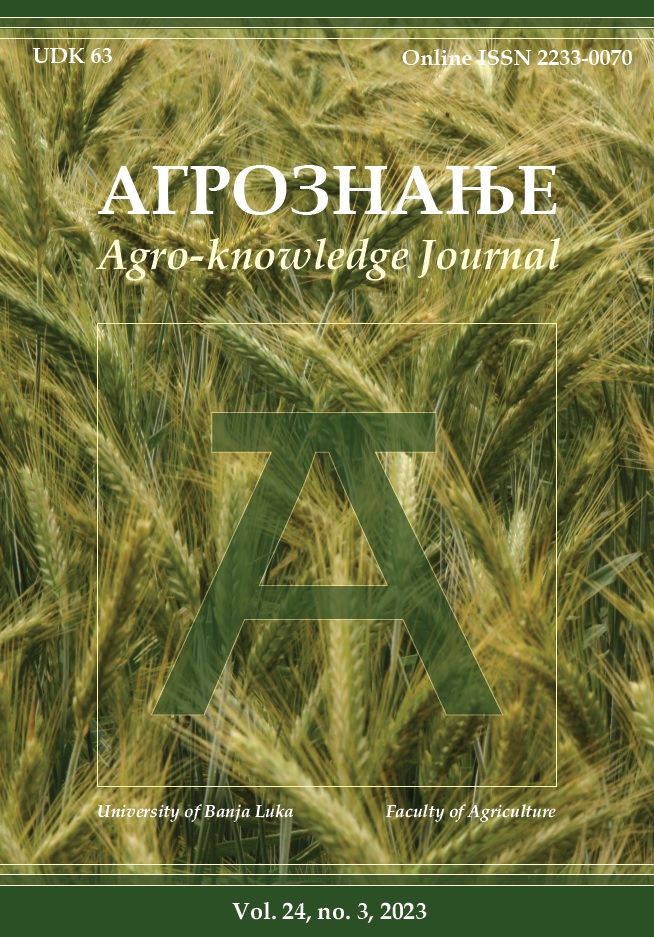Genetic diversity of leafy kale genetic resources (Brassica oleracea var. acephala L.)
DOI:
https://doi.org/10.7251/AGREN2303077UAbstract
Leafy kale (Brassica oleracea var. acephala L.) is one of the most important Brassicaceae species with health-promoting properties and great diversity. To investigate variability within and among accessions, 12 accessions (each accession comprised four individuals/genotypes) from the Balkan region were genotyped at 12 simple sequence repeats (SSRs) loci. The selected SSR markers originated from the genomes of B. oleracea (eight), B. rapa (two) and B. napus (two). DNA was extracted from seeds, cotyledons, shoots, and young leaves, depending on the germination energy of each seed, using magnetic extraction method. Genetic analysis included eight accessions from Serbia (24 genotypes), two accessions from Montenegro (eight genotypes), and one accession from Bosnia and Herzegovina and Croatia (with four genotypes each). Accession-specific polymorphism was found at the Ol12-FO2 and Ol10-F11a loci, where genotypes were qualitatively distinguished by horizontal agarose gel electrophoresis (binary detection). Among 12 loci, the average polymorphic information content (PIC) was 0.71, with the marker Ol13-C12 proving to be the most informative (PIC = 0.89). However, the analysis of molecular variability (AMOVA) showed 11% diversity between accessions, 19% diversity between genotypes, and 70% diversity within genotypes, explaining the molecular diversity of native Balkan leafy kale germplasm. According to the genetic structure, four genetic groups were formed with an average expected heterozygosity of 0.70 between clusters. In order to exploit the genetic diversity, it would be advisable to evaluate these accessions at phenotypic level and use their potential in breeding programmes.

